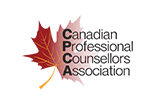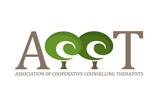Enhancing communication with clients is an essential part of clinical counselling training that will help you succeed in your career. Self-reflection will play an important role in developing your counselling skills. With this in mind, paying close attention to which skills you have mastered and those that you can improve will help you find success as a counsellor.
Microskills enhance the communications between counsellor and client, helping to build a working relationship based on trust and teamwork (“Five Counselling Microskills,” 2009). These specific skills aid in cultivating an effective discussion that is helpful and meaningful to client progress (“Five Counselling Microskills,” 2009). While some of these microskills are explored during clinical counsellor training, many of them will require ongoing development and improvement throughout your career. Continue reading to discover three microskills to continue to focus on while on the job.
1. Observation as a Microskill
The overall assessment of a client’s presentation, including verbalized and non-verbalized concerns, can contribute greatly to your overall understanding of their condition. Observation is a microskill required for registered professional counsellor training graduates to uncover the honest truth about each client and their feelings. Observations of body language, facial expressions, tone of voice, and the way they share stories with you or recount events are all important information to consider when evaluating and guiding clients (Madden, n.d.).
Observation should occur continually as an ongoing activity throughout a counselling session (Geldard, 2010). Our own interpretation of a client’s expressions may initially be misleading due to our own experiences and pre-existing biases (Geldard, 2010). This makes continuous observation more important than ever so that you may consider all available information, determine possible conflicts, and self-reflect on your interpretations of each client. If you are working with a younger population, then observation can sometimes look like accepting their own picture of reality, even if it differs from yours, in order to build trust (Geldard, 2010). From there, they will begin to build confidence in the relationship and feel more comfortable sharing the true feelings they might have initially held back. Younger populations tend to feel more defensive and unsure of themselves, so observing their true nature is essential for making progress (Geldard, 2010). Overall, no matter the population, observation is a microskill you will want to continue to work on throughout your career.
2. Response Microskills Build Rapport After Clinical Counsellor Training
Response microskills encompass a few different concepts, including reflections, questioning, summarizing, conveying empathy, and paraphrasing (Beck, 2018). These skills will help you deliver an effective therapeutic intervention with your clients, with the ability to dig a bit deeper into the reasoning behind their feelings (Beck, 2018). Advanced response skills will help you present yourself as an engaged, present, and knowledgeable professional in your field following clinical counsellor training (Beck, 2018).
The art of questioning should be delicately practiced, using open-ended questions when appropriate and understanding when more closed questions are needed to refocus your client’s attention (Madden, n.d.). Reflection often implements moments of silence to allow for reflection of both parties on the matters at hand. As the client deepens their internal reflection, you will also have time to determine how best to respond to their next observation (Beck, 2018). You can also use forms of active listening to convey empathy and reassure the client that you are hearing their concerns and support their disclosures (Beck 2018).
3. Attending Behaviour
Attending is a microskill that will also need to be exercised with each new client to form an initial bond (Madden, n.d.). Building a strong relationship may take time; however, attending behaviour during their first visit will help them feel comfortable enough to still make use of their initial session. By attending, you can help make the client talk and open up to you about their concerns (Five Counselling Microskills, 2010).
Attending behaviour may look different for each client, depending on their age, profession, culture, and more. Because of this, it is important to self-reflect and determine the best ways to attend to each new client. In Western culture, making eye contact is important to express your genuine interest in hearing what they have to say (Five Counselling Microskills, 2010). Encouraging gestures, inviting body language, and a warm presence may help clients get to this point of comfort (Australian Institute of Professional Counsellors, 2012). Matching your client’s nonverbal behaviour may also be an effective way to attend to their unique situation, improving their ability to open up in a more familiar environment (Five Counselling Microskills, 2010). The use of nonverbal and silent communication can have a profound effect on a counselling session and can make all the difference in a client’s progress.
Interested in earning your professional counselling diploma?
Contact Rhodes Wellness College for more information!












